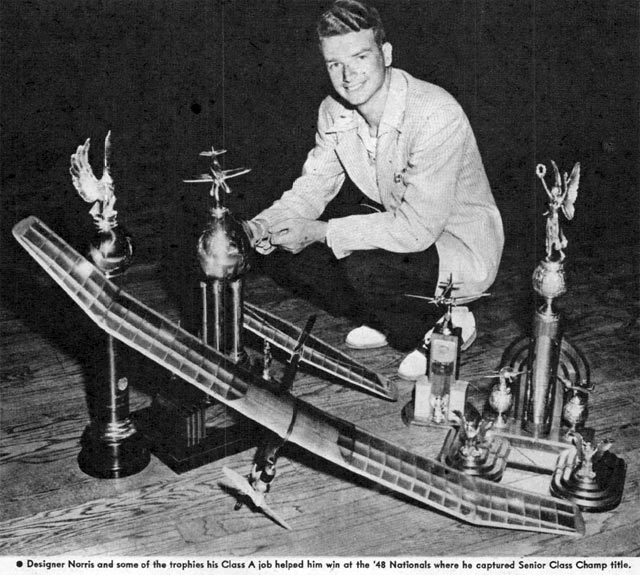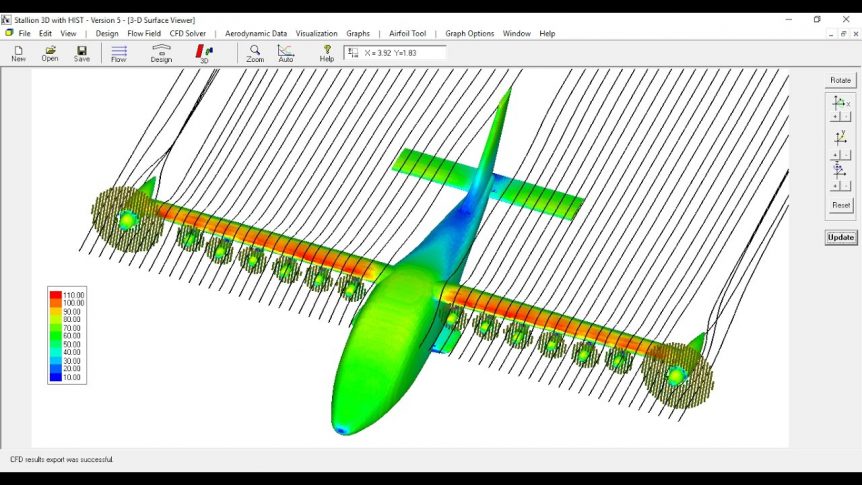Jack Norris, an aviation and space pioneer, died on December 21, 2021. Holder of more than 50 aerospace patents, many conceived during his time with NASA, he was a constantly inventive presence in the aviation world. The Experimental Aircraft Association shares a short autobiographical sketch with an incredible number of highlights. As a youth, Jack was twice the Senior Overall National Model Aircraft Champion in 1946 and 1948. Later, he created Boeing’s flight controls, which allowed safe flights for over four billion of us. 107 of his maneuvering rocket control valves flew on Mercury, Gemini, and Apollo missions, and are now in the Smithsonian. He was the Technical Director for the Voyager, Burt Rutan’s airplane that carried Dick Rutan and Jeanna Yeager on their non-stop around-the-world flight in 1986. This followed a long career that included acting as a consultant on nuclear power, nuclear submarines, and work for the U. S. Air Force on acceptance testing for craft as diverse …
Aquifer: Flow Batteries and Rim-driven Motors
In a highly unusual approach, two NASA researchers have combined a flow battery system with a rim-driven propeller drive system. Presenting at the Sustainable Aviation Symposium 2019 at UC Berkeley,Robert McSwain and Jason Lechniak detailed their AQUIFER Project, currently underway in the NASA Armstrong Flight Research Center at Edwards Air Force Base. On Day Two of the Symposium, Jason headed the presentation with a discussion of the implications of this and McSwain’s work on overall energy economy and NASA eVTOL discoveries. Robert followed with a technical description of the Nano Electrofuel (NEF) Aqueous Flow Battery and Rim-driven Motor (RDM). “AQUIFER establishes technical feasibility of an early-stage technology, a high-energy density, aqueous-based, flow battery, resulting in a near-term increase of 1.7 times range over an all-electric battery, while retiring fire and explosion hazards associated with lithium-based chemistries. The… flow battery will be integrated with a rim-driven motor (RDM) as a multi-functional design to eliminate conductive EMI and weight from long cable …
Albatross, Dragonflies, and Hummingbirds
Your editor took a trip to Tehachapi, once home of the infamous California Women’s’ Correctional Institution, mentioned in no less than three 1940’s films noirs. (It’s now a gray-bar hotel for bad boys, not bad girls.) Lesser offenses were in mind, though, since Labor Day weekend has been the time for 31 meetings of the Experimental Soaring Association’s Western Workshop. The group, devoted to improving sailplanes and testing the limits of soaring technology, has been in the forefront of many significant developments, and its members include many record holders and aerodynamics experts. This year’s convocation included talks on birds, dragonflies (the Libelle sailplane), and even a demonstration of Aerovironment’s spy hummingbird, a camera-toting drone no larger than a 90-percentile member of the Trochilidae family. Phil Barnes kicked off the Saturday talks, showing his incredible computer simulations of the dynamic soaring flight of the Albatross, which included an impassioned plea to help preserve this magnificent bird. He noted that “gyres” of plastic slurry distributed …
A Useful Spreadsheet and GFC Handicapping Tool
For analyzing the greatest economy from an aircraft’s design, Howard Handelman, a highly-engaged reader of this blog, provides a link to his web site, which includes a downloadable spreadsheet he has devised that will give the inquiring reader hours of enjoyment. Handelman, self-described as, “just a retired IT guy,” with “weak math skills,” but a “compulsively curious” nature, has devised a tool for analyzing any airplane’s performance based on a few known variables, and which he has applied to many of the Green Flight Challenge’s aircraft. The basis for his analyses is his “triangle tool,” a wedge that can be used to help design propellers, “test [the] truth” of claimed aircraft performance, and estimate brake horsepower in real life circumstances (at least within the parameters of the triangle tool). Handelman notes that some aircraft, including those with laminar flow, will “not fit the model very well because they don’t fit the V-squared curve. Synergy won’t look anything like the model.” His findings …
CAFE News: Doctors Seeley and Ford Stand and Deliver
At the fourth annual Electric Aircraft Symposium, April 23 and 24 at Rohnert Park, California, two CAFE leaders provided the audience with superb presentations on CAFE Foundation’s history and future goals. Dr. Larry Ford, Vice President of the organization, led with highlights from CAFE’s past, including the scientific efforts to measure aircraft drag and provide actual numbers for comparing aircraft performance, a goal inherent in the CAFE name. He highlighted the work of many past and present CAFE volunteers (after all, CAFE is all volunteer, and a 501c.3 charitable organization promoting aeronautical research at both the grass roots and the highest levels), including the CAFE Barograph, a significant instrument that allowed objective flight performance characterization of individual aircraft and honest comparisons between aircraft. Larry let audience members know about the contributions of Jack Norris, and his creation of “zero thrust glide testing.” This innovation involved finding the point at which the propeller was not creating drag or producing thrust. At …
Synergy and Passion at EAS
John Palmerlee, Editor of The Flying Wire, Experimental Aircraft Association Chapter 124’s newsletter, wote this in the May 5, 2010 edition. The CAFE Team hosted what was in my opinion a very successful event at the Doubletree Hotel in Rohnert Park, April 23 and 24, 2010. Nearly thirty contributors from around the world spoke at the Electric Aircraft Symposium, and their message was clear: Change is coming… let’s get on board together. Electric airplanes and motorcycles, model airplanes, algae biofuel synthesis, wetlands initiatives, hybrid air carriers, battery breakthroughs, VTOL PAVs, tethered wind generators, flight systems analysis, nanostructures… and a mystery Green Flight Challenge aircraft promising to tap into new design paradigms. This was just a taste of the concepts spinning around at the EAS 2010. This meeting of minds was diverse yet connected, calculated yet passionate. Every presentation filled a preset time-slot, so each presenter’s WPM (words per minute) metered their content. It was a dizzying earful! As the …


